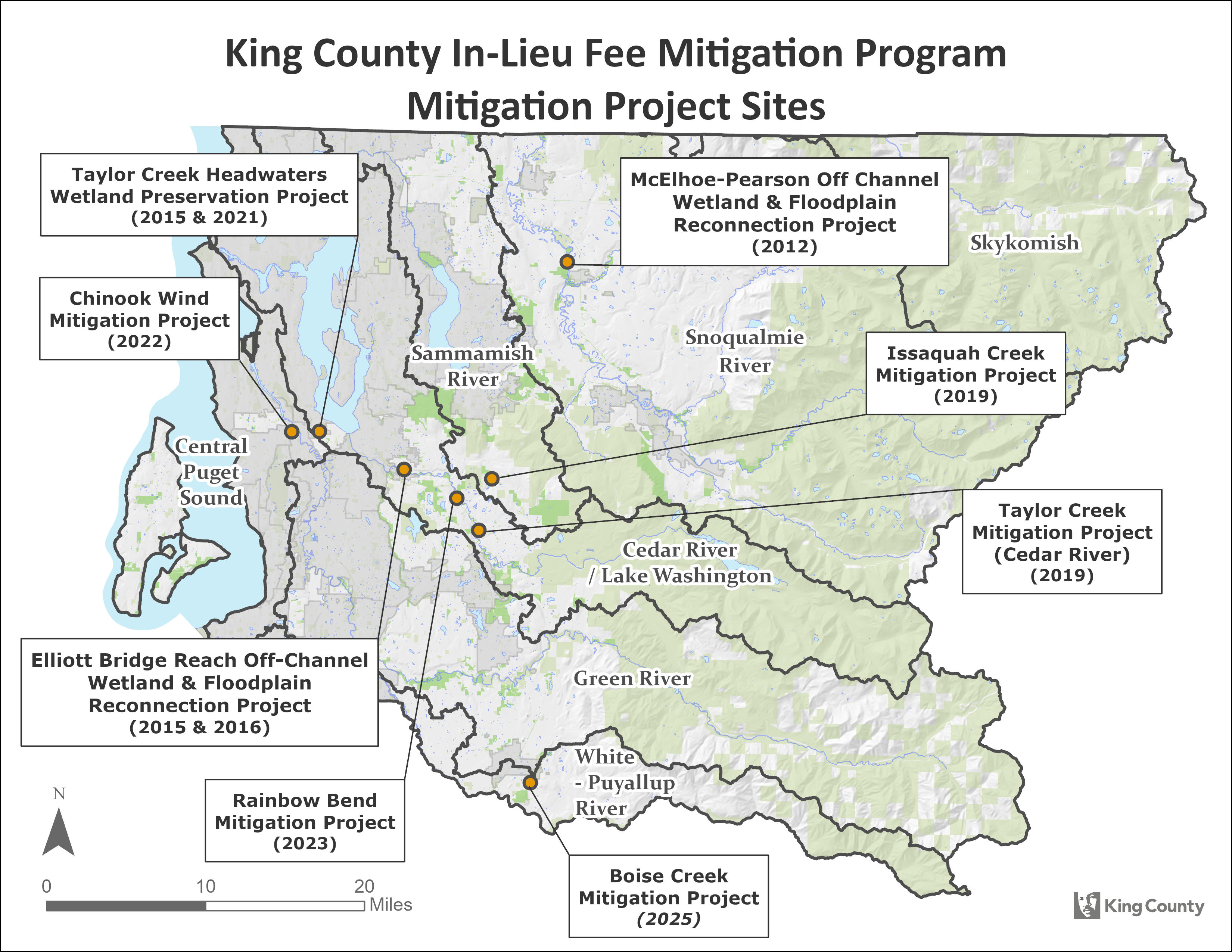Mitigation Sites
The King County Mitigation Reserves Program In-Lieu Fee Mitigation Program is a state- and federally- authorized In-Lieu Fee Mitigation Program that provides an option for permittees with unavoidable impacts to wetlands and aquatic resources to pay a fee to King County instead of completing their own offset project. Fees collected are used to design and construct mitigation projects that restore wetlands and aquatic resources to offset the mitigation obligations.
For more information, see the project pages:
Boise Creek Mitigation Project
Rainbow Bend Mitigation Project
Chinook Wind Mitigation Project
Issaquah Creek Mitigation Project
Taylor Creek (Cedar River) Mitigation Project
Taylor Creek Headwaters Wetland Preservation Project
Elliott Bridge Reach Off-Channel Wetland & Floodplain Reconnection Project
McElhoe Pearson Off-Channel Wetland & Floodplain Reconnection Project
 Translate
Translate
